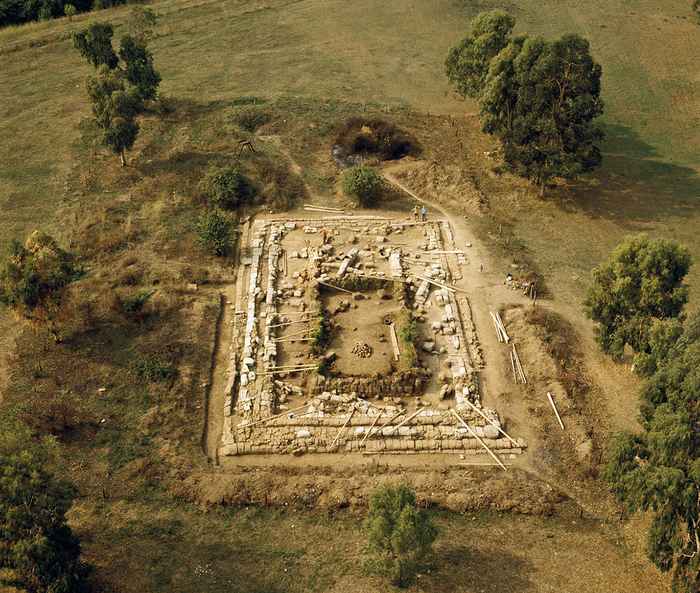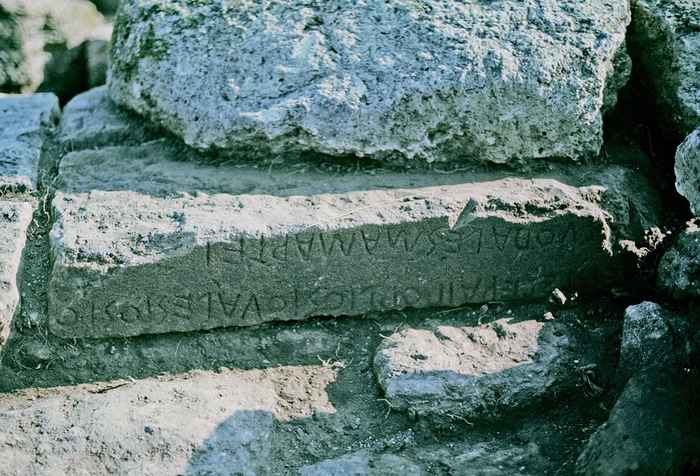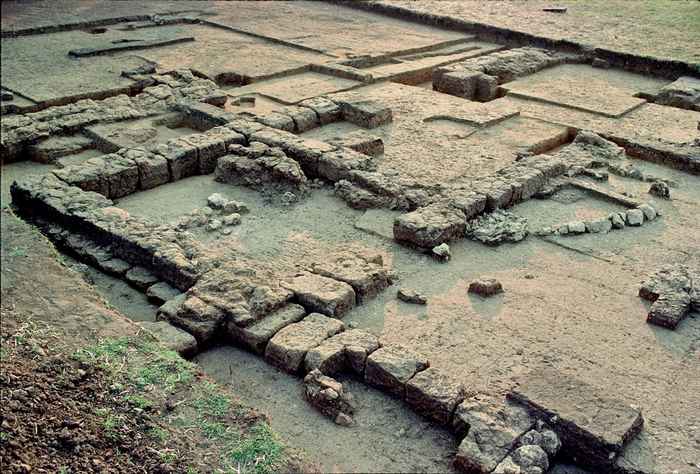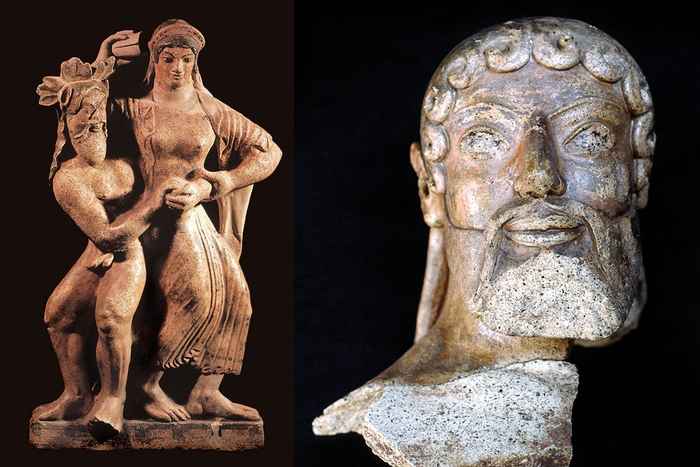Excavations Acropolis

Excavations Acropolis (1896-1898)
In 1896, the French excavator Henry Graillot discovered on a hill in Le Ferriere the temple complex of Mater Matuta, well known from ancient written sources. A very rich deposit of votive gifts lying underneath it, together with the terracotta decoration that once decorated the roofs of three successive temples, drew international attention, inducing the Italian government to take over the research and start very large-scale excavations. In two years’ time, the remains of the temples were mapped as well as the remains of several buildings around the sanctuary and part of an ancient road leading to it. A second large votive deposit from the Hellenistic period was discovered opposite the temple complex. After some preliminary publications and the partly resumed excavation of 1907-1910, the data disappeared in a drawer and the temple remains got overgrown. Small excavations in the thirties and fifties remained unpublished.

Excavations Acropolis (1977-2002)
In 1977, the Dutch Institute in Rome (NIR) was invited by the Comitato per l'Archeologia Laziale to reexamine the remains of the temples in Satricum. The first aim was to clean the remains in order to be able to document these. Already in the first week of the re-excavation of the temple complex an archaic Latin inscription, the so called Lapis Satricanus - the oldest coherent monumental Latin inscription so far - was discovered between the tuff stone foundation blocks. The discovery of a hut below the temple’s cella lead to the extension of the research into the Iron Age-layers underneath the temple. Over time, the research was extended to the area east of the temple complex where several large buildings were brought to light. At the same time a team of Groningen State University (RUG) started exploring the archaeological remains west of the temple complex excavated 1896-1898. Besides the remains of huts and houses, a huge pottery deposit and a small burial ground were found.

Since 1991, the team of the University of Amsterdam has been carrying on the NIR investigations of the settlement remains east of the temples. Several new structures were identified that resemble those west of the temples but also unparalleled structures were found. One of these is a building, found in 2000 at the northeast corner of the hill, with five column bases still in situ.

In addition to the new excavations, a start was made with the study and publication of the data and material collected during the earlier, Italian excavations at the acropolis. By now this has resulted in the publication of the reconstruction of the three successive temples, two publications about the terracotta roofs of the different temple phases and a publication about the huts and graves at the west side of the acropolis excavated in 1907-1910. The publication of the votive deposit underneath the temple complex from the Archaic period is in preparation.
Research program:
Iron Age remains underneath the temples: B.H. Heldring
Settlement remains: M. Gnade
Architectural terracottas: R.R. Knoop and P.S. Lulof
Archaic votive depot: D.J. Waarsenburg
Hellenistic votive depot: M. Gnade, B.H. Heldring, D.C. Steures